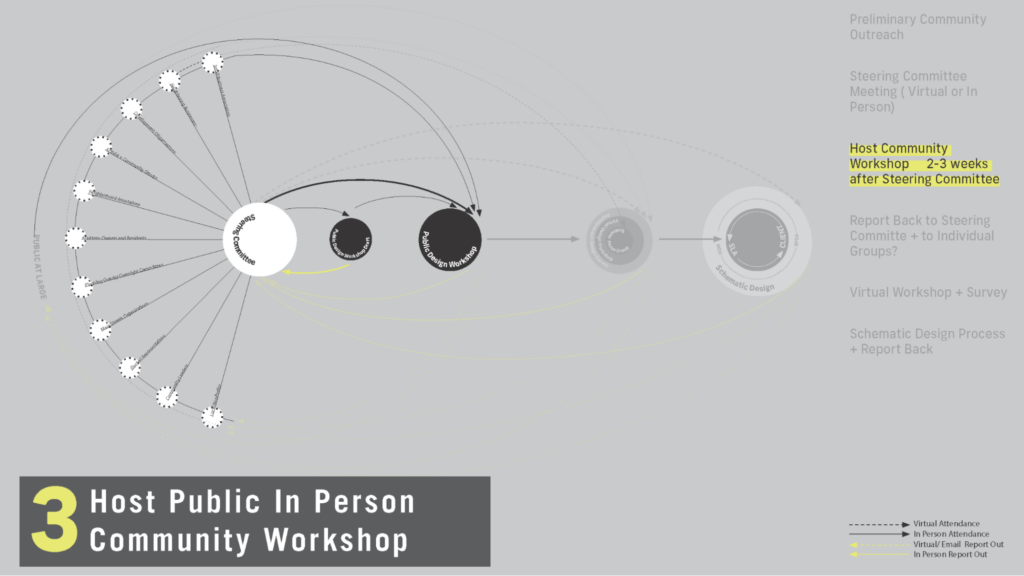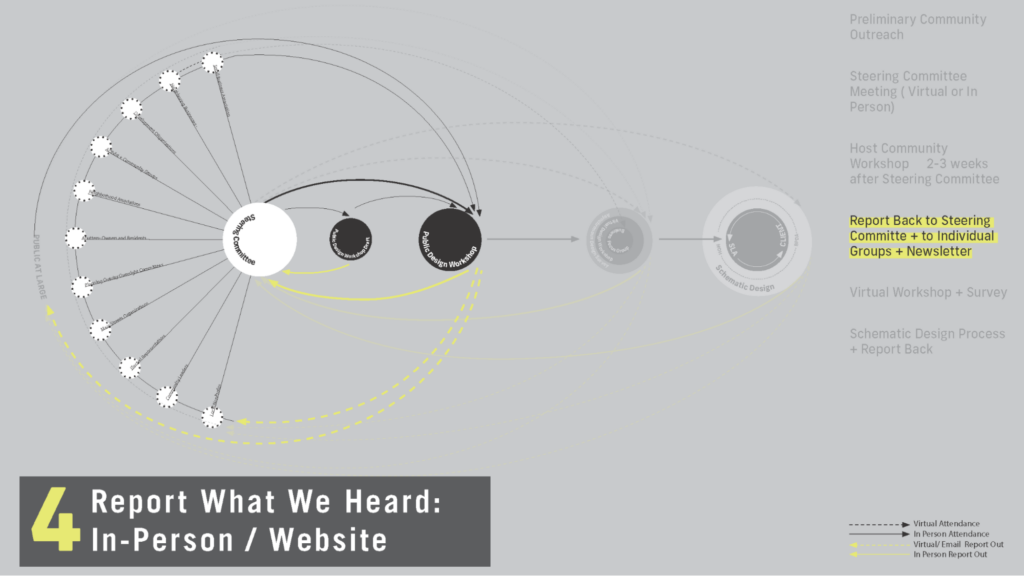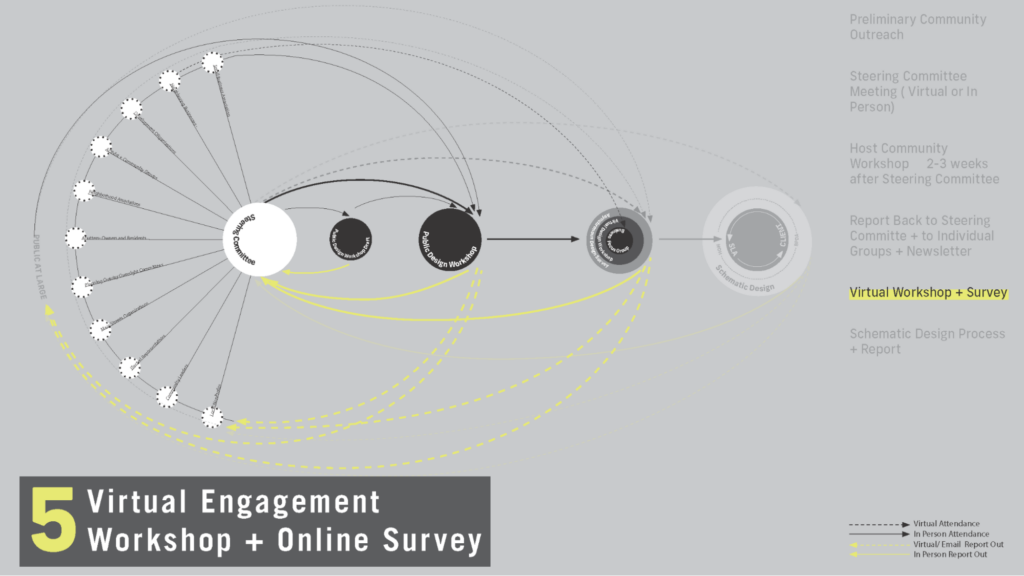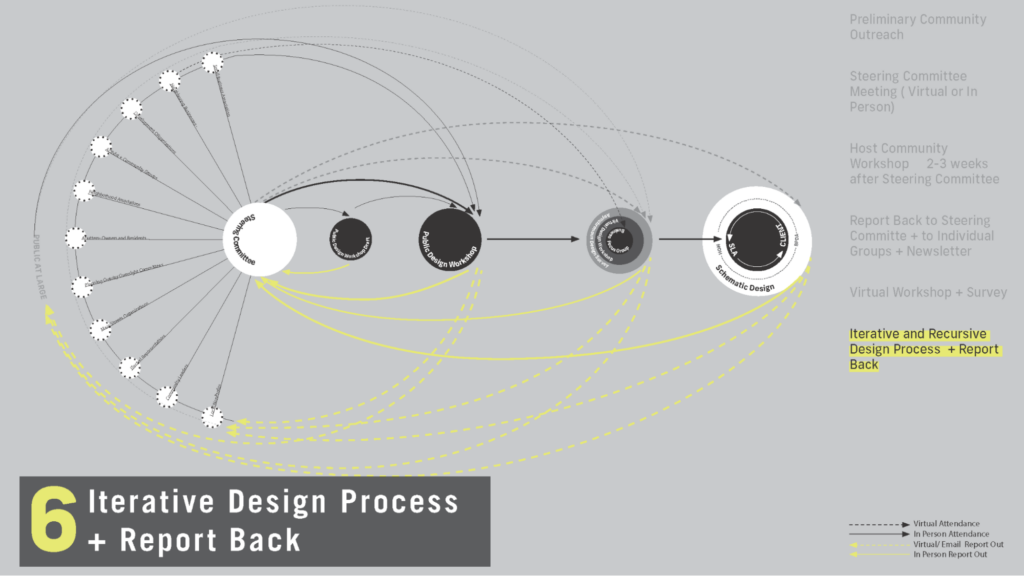Studio Luz offers comprehensive community engagement services to our clients to help build consensus at any point within a project’s life cycle or development. Tailored to a particular project’s needs and stage of development, our engagement process can span from a single day event to a multi-pronged approach that spans asynchronous, online, and in-person events.
Throughout the proactive process initiated by Madison Park Development Corporation [MPDC] as part of the new 639 Warren Street project, we have been exploring and reflecting on the “how” of projects like this. Reviewing our work in this area, we’ve determined 6 actionable steps that have guided Studio Luz through this process and which comprise a framework that we recommend for navigating community engagement projects successfully, illustrated by diagrams by Project Manager and Marketing + Community Liaison Sophie Nahrmann and outlined here to help people, municipalities, and clients to better understand our process.

Preliminary Community Outreach
Before we get started on a project, we create a strong foundation with preliminary community outreach. This means making in-person, individual connections, including those made via neighborhood walkthroughs. We try to seek connections with those in organizations that don’t usually attend committee meetings but who have valuable input to contribute and would benefit from participating. From this preliminary outreach, we are able to form a steering committee for the project.

Steering Committee Meeting
Once we have determined who will be part of the project’s steering committee, we organize a steering committee meeting, taking place either virtually or in-person. This time is dedicated to gathering input from committee members, including planners and consultants, on what workshops should aim for and look like, and creating a public design workshop draft. Working together as a team allows us to develop a plan for workshops, as well as consulting and targeting and creating focus groups, that gets us all the information we need for future steps.

Host Community Workshop
2-3 weeks after the steering committee meeting, we host the planned community workshops to connect directly with community members and hear their thoughts, concerns, and goals. These workshops are open to the public and are conducted in-person. These meetings vary in size, though we focus our scope to make sure we hear from all participants. For example, Studio Luz recently conducted four community engagement workshops for the Campello Neighborhood Plan, and each workshop hosted between 25-30 participants. Each workshop builds upon the input from the previous sessions, helping us to further refine recommendations for the project.

Report What We Heard
Communication between organizations is essential to the community engagement process, which is why we build it into our framework. Once we’ve completed each workshop, we report back to the steering committee and to individual groups about what we heard. We do this through virtual and in-person meetings, as well as newsletter sends.

Virtual Engagement
We also build time and space into the project to accommodate virtual engagement, such as establishing a web presence for the project, offering an online asynchronous design survey for public participation, and coordinating virtual business focus groups and virtual design workshops. Tools that we use to reinforce learnings from workshops include continuous updates on municipality websites, email outreach, and social media posts. All of these tools contribute to providing information and ensuring that our process is as transparent as possible.

Iterative design process
During this step, we review feedback we’ve received from the community, which we incorporate into our design documents and comprehensive planning and zoning reports. This process is iterative and recursive, with rounds of feedback and revisions. Communication with all participants, including organizations, clients, and community, continues throughout this step, and we continue to use our tools for virtual engagement, like a website and email notifications, to notify the community of our design progress and recommendations.
As a studio, we’re proud to have successfully developed this framework through our past projects and to apply them to current and future projects as well. We look forward to continuing our work with community engagement projects, creating impactful change, and making new connections along the way.